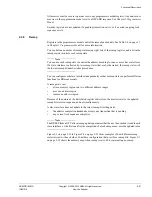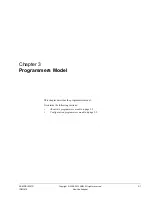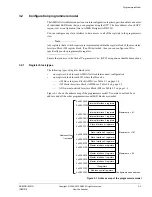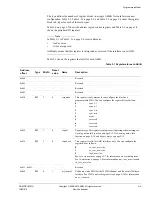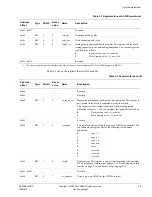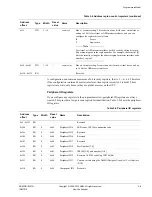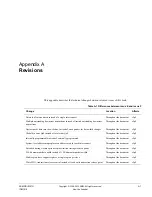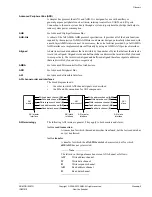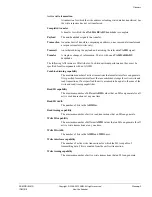
ARM DDI 0397G
Copyright © 2006-2010 ARM. All rights reserved.
Glossary-1
ID031010
Non-Confidential
Glossary
This glossary describes some of the terms used in technical documents from ARM.
Advanced eXtensible Interface (AXI)
A bus protocol that supports separate address/control and data phases, unaligned data transfers
using byte strobes, burst-based transactions with only start address issued, separate read and write
data channels to enable low-cost DMA, ability to issue multiple outstanding addresses, out-of-order
transaction completion, and easy addition of register stages to provide timing closure.
The AXI protocol also includes optional extensions to cover signaling for low-power operation.
AXI is targeted at high performance, high clock frequency system designs and includes a number
of features that make it very suitable for high speed sub-micron interconnect.
Advanced High-performance Bus (AHB)
A bus protocol with a fixed pipeline between address/control and data phases. It only supports a
subset of the functionality provided by the AMBA AXI protocol. The full AMBA AHB protocol
specification includes a number of features that are not commonly required for master and slave IP
developments and ARM recommends only a subset of the protocol is usually used. This subset is
defined as the AMBA AHB-Lite protocol.
See also
Advanced Microcontroller Bus Architecture and AHB-Lite.
Advanced Microcontroller Bus Architecture (AMBA)
A family of protocol specifications that describe a strategy for the interconnect. AMBA is the ARM
open standard for on-chip buses. It is an on-chip bus specification that describes a strategy for the
interconnection and management of functional blocks that make up a
System-on-Chip
(SoC). It aids
in the development of embedded processors with one or more CPUs or signal processors and
multiple peripherals. AMBA complements a reusable design methodology by defining a common
backbone for SoC modules.

